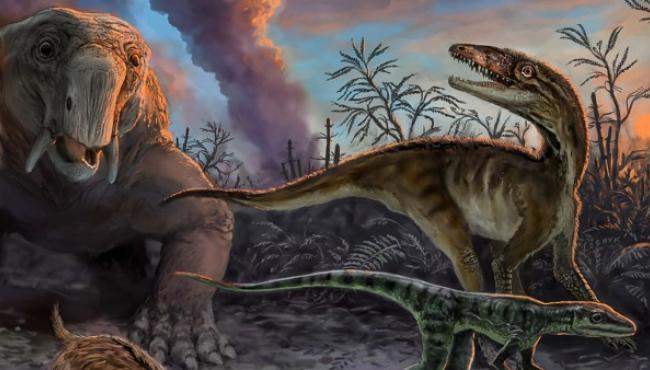-
Tips for becoming a good boxer - November 6, 2020
-
7 expert tips for making your hens night a memorable one - November 6, 2020
-
5 reasons to host your Christmas party on a cruise boat - November 6, 2020
-
What to do when you’re charged with a crime - November 6, 2020
-
Should you get one or multiple dogs? Here’s all you need to know - November 3, 2020
-
A Guide: How to Build Your Very Own Magic Mirror - February 14, 2019
-
Our Top Inspirational Baseball Stars - November 24, 2018
-
Five Tech Tools That Will Help You Turn Your Blog into a Business - November 24, 2018
-
How to Indulge on Vacation without Expanding Your Waist - November 9, 2018
-
5 Strategies for Businesses to Appeal to Today’s Increasingly Mobile-Crazed Customers - November 9, 2018
Early Dino Relatives Younger Than Previously Believed
The analysis puts the time gap between the dinosaurs and these predecessors, called dinosauromorphs, at an estimated 5 million years instead of 10 million.
Advertisement
This study has added a fresh take on when dinosaurs have evolved from their reptile predecessors.
The researchers found the base formation is younger than 236 million years old and the top layer is younger than 235 million years old, possibly being as young as 234 million years old. That, in turn, means that dinosaurs must have evolved faster than previously thought.
Scientists said that there exists not much difference between the early dinosauromorphs and dinosaurs. For instance, dinosaurs had a ball-and-socket hip that could rotate easily, and additional sacral vertebrae (a vertebra at the end of the spine), which helped strengthened the hips.
Dinosauromorphs are considered the earliest relatives of dinosaurs.
“We’ve shifted it into the Late Triassic” from the Middle Triassic Period, says Irmis, a paleontologist at the University of Utah in Salt Lake City.
A group of researchers recently analyzed a set of fossils found in the Chañares Formation in Argentina, with the hopes of learning more about the origin of both dinosaurs and their closest relatives, the dinosauromorphs. Dinosaurs also developed an extra hole in their skulls.
The Chañares is important because it features fossils from dinosaurs as well as dinosauromorphs from earlier in evolutionary history, so researchers can track their evolutionary timeline. The Chanares Formation found in the basin contains hundreds of meters of residues dated long ago where the margin of error is significantly narrow and the complete history can be seen in the basin alone. The crystals, a product of volcanic explosions, contain the radioactive element uranium.
“We thought that these rocks that included these early dinosauromorphs were recording the eventual recovery of ecosystems from this extinction, where ecologically things are finally getting back to normal and diversifying”, Dr Irmis said. Irmis said that there were some dinosauromorphs that were present even 20 million after dinosaurs emerged. The dinosaurs didn’t dominate the mid to high latitudes-such as present-day Argentina, Brazil and South Africa-until the late Triassic, about 215 million years ago.
The new research is a “solid study”, said Kenneth Lacovara, a professor of paleontology and geology and the dean of the School of Earth & Environment at Rowan University in New Jersey, who wasn’t involved with the study.
This is very big news for paleontologists, as it shows them a very progressive evolution of the dinosaurs and their ancestors, as well as disproving the old theory that the dinosaurs managed to take control of the world following a mass extinction.
Advertisement
The study thwarted previous beliefs that dinosaurs saw to a rapid dominance of the Earth.




























